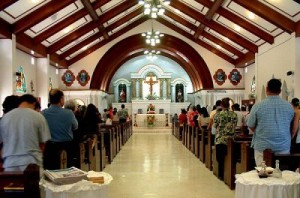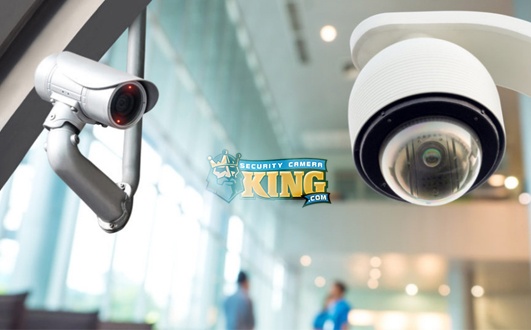 Unfortunately, in this day and age even church security systems are becoming a necessity. Many churches only have people inside or on the premises at certain times and/or on certain days. This predictable schedule of appearance can make churches and related buildings excellent targets for vandalism and theft. However, a digital video church security system can reduce the threat of theft and vandalism tremendously and provide documentation of the event should it occur.
Unfortunately, in this day and age even church security systems are becoming a necessity. Many churches only have people inside or on the premises at certain times and/or on certain days. This predictable schedule of appearance can make churches and related buildings excellent targets for vandalism and theft. However, a digital video church security system can reduce the threat of theft and vandalism tremendously and provide documentation of the event should it occur.
Standalone digital video systems are a great investment as a church security system. Not only can they record acts of vandalism and theft, but simply having digital video church security systems deters most potential wrong doers. In addition, these systems are incredibly versatile which means they can be used in just about any situation or application and they are affordably priced so they can accommodate just about any church budget.
Church security systems require very little maintenance or human intervention when operating. That means on the days that there are no church related activities, the system continues to provide monitoring and security services without the need of an individual to be present to operate.
Church security systems can be used anywhere on church property. Cameras can be placed anywhere inside the church from the vestibule to the altar or apse. Their relatively small size does not usually disturb the aesthetics of the interior design of the church. Cameras can be placed in reception rooms, Sunday school classrooms, storage facilities, and on the property’s perimeter to provide comprehensive coverage.
Basic digital video camera church security systems have from one to several digital video cameras, a processor/Digital Video Recorder or DVR and a monitor. The cameras capture the video image and send it via a coaxial cable to the processor/DVR unit. This unit uses the information to create a digital video file which can be stored on the DVR for later viewing or archiving, or can be viewed live.
Digital video files can be incredibly large in size. A digital video is actually several digital photographs taken in rapid succession, usually about 30 per second. A digital photograph file can be rather large in size, so one can imagine the potential size of a digital video file. The processor uses a software or hardware utility to shrink the size of the digital video file without destroying the quality of the file. This makes the file easier to handle and provides for longer storage times on the DVR.
The digital video cameras used for church security systems have a variety of optional features that allows the cameras to be used just about anywhere. For example cameras can be indoor or outdoor models. Outdoor models are just like indoor models except they contain a protective case or covering that protects them from being penetrated by various types of matter. These cameras are often rated according to an International Electrical code standard called an Ingress Protection rating. When purchasing outdoor cameras for a church security system look for cameras rated IP66 or IP67 as these provide protection not only from dust but from water as well.
Church security system cameras can be wireless too. A wireless camera only requires a small wire for its power supply. Normally, a coaxial cable is run from each camera to the processor/DVR unit; however wireless cameras eliminate this cabling.
A wireless camera has a built in transmitter and antenna that sends its video information in the form of radio waves to a receiver. The receiver is normally located in the same location as the processor/DVR and/or monitor. The receiver converts the radio signal back into an electronic signal and sends it to the processor/DVR for viewing or recording. Wireless cameras are incredibly quick and easy to install and provide for a more aesthetically pleasing appearance since there is no cable running from the camera to the DVR.
Other optional features may include:
• Ability to record audio
• Day/night vision cameras that require very little light to produce an image
• Night vision infrared cameras that can produce a high quality video image in total darkness
• Pan-Tilt-Zoom functions
• Network cameras that use the internet as the network and can implement a personal computer to carry out the functions of the processor/DVR and monitor
As you can see, church security systems are incredibly flexible in application and can provide a high level of “deterrent factor” for theft and vandalism. In addition, these systems are reasonably priced to fit just about any church budget.











